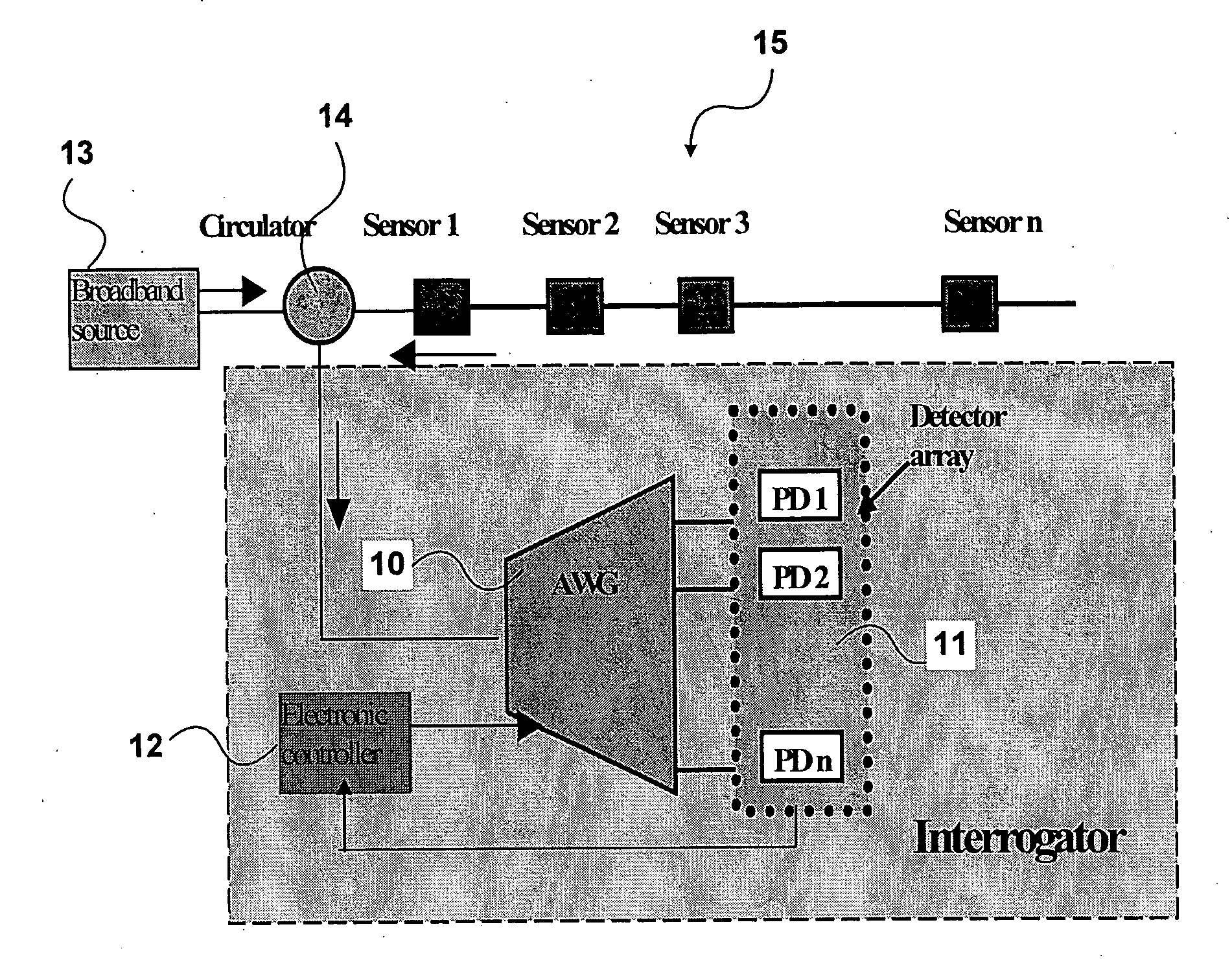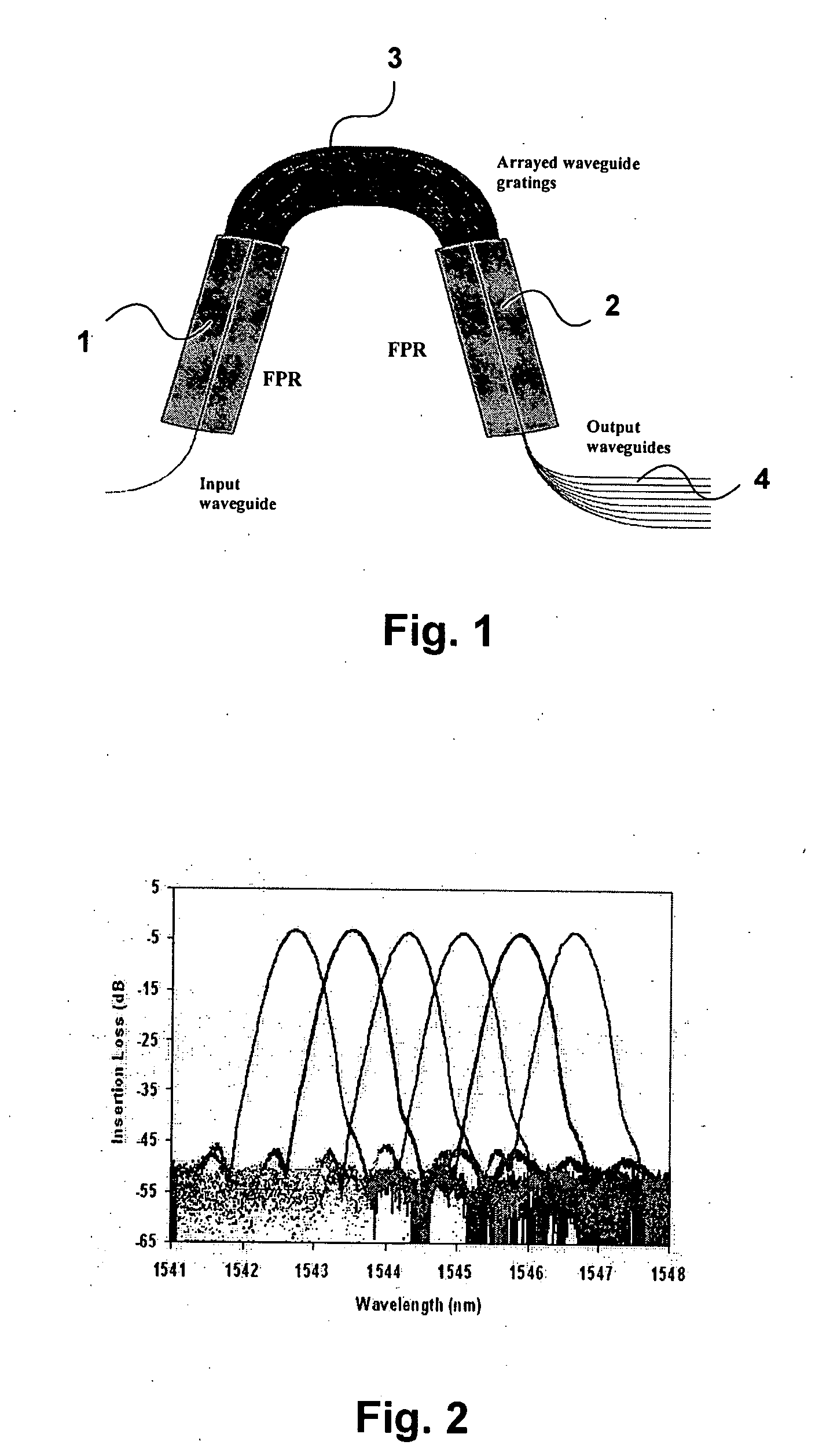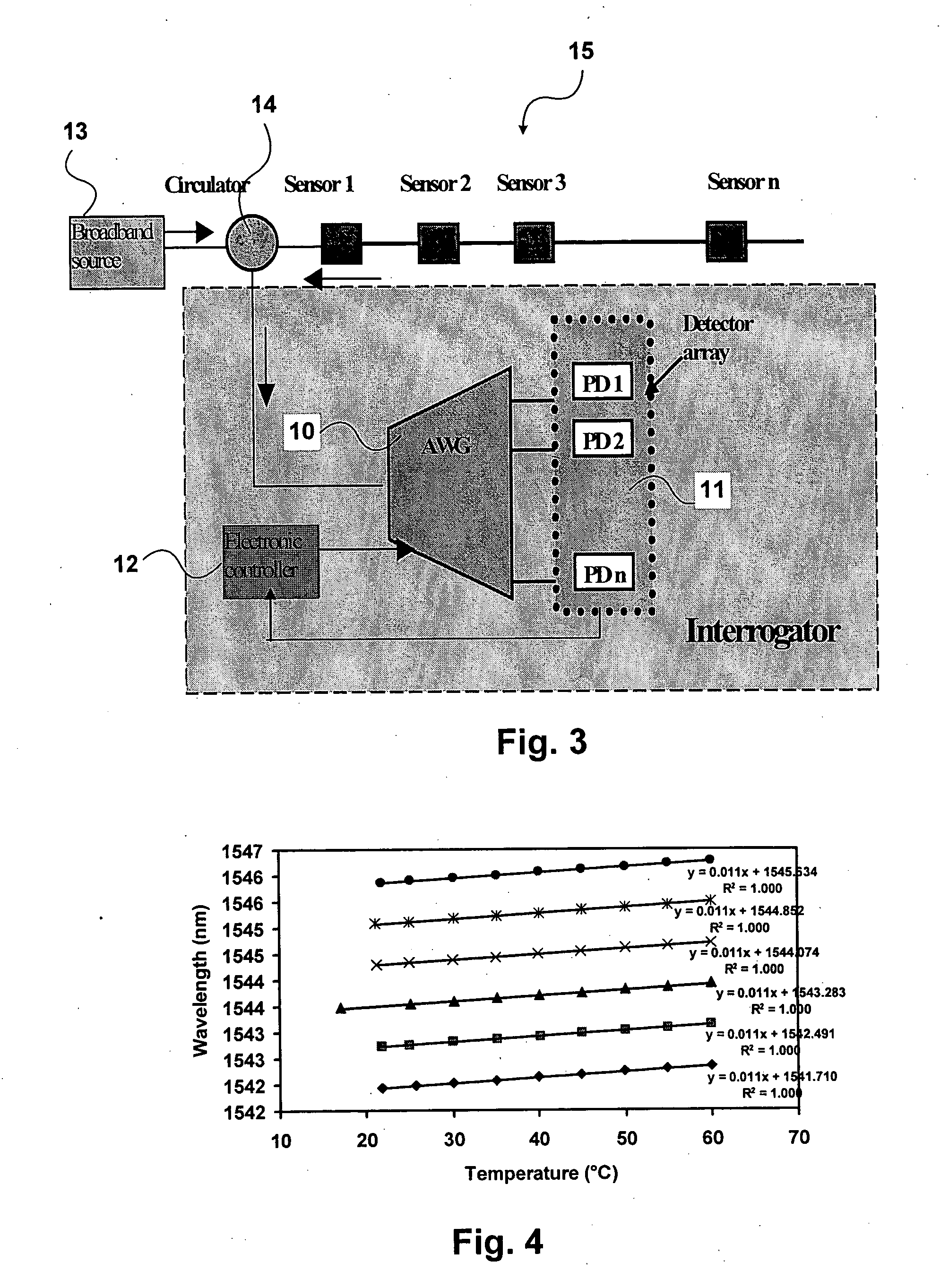Simultaneous interrogation of multi wavelength-modulated fiber optical sensors by modulating an arrayed waveguide grating based demultiplexer
- Summary
- Abstract
- Description
- Claims
- Application Information
AI Technical Summary
Benefits of technology
Problems solved by technology
Method used
Image
Examples
Embodiment Construction
[0019] The operational principles of an AWG have been studied in detail and reported in the literature. See, for example, M. K. Smit and C. V. Dan, “PHASAR-based WDM devices: principles, design and applications”, IEEE J. Topics Quantum Electron. Vol. 2, pp. 236-250, 1996.
[0020] An AWG, as shown in FIG. 1, consists of two slab waveguides 1, 2, providing free propagation regions (FPR) connected by an array of waveguides 3 with a set length difference between the neighboring waveguides. When used as a demultiplexer, light enters the first slab waveguide 1 and diverges into the waveguide array 3, then arrives at the second slab waveguide 2 with different relative phases. This results in the different wavelengths of light being focused into the different output waveguides 4. FIG. 1 illustrates a 1×n channel AWG multiplexer. For a typical AWG multiplexer, the values of n are 4, 8, 16, 32 or 40 channels, but in theory there can be any number of channels.
[0021]FIG. 2 illustrates the typic...
PUM
 Login to View More
Login to View More Abstract
Description
Claims
Application Information
 Login to View More
Login to View More - Generate Ideas
- Intellectual Property
- Life Sciences
- Materials
- Tech Scout
- Unparalleled Data Quality
- Higher Quality Content
- 60% Fewer Hallucinations
Browse by: Latest US Patents, China's latest patents, Technical Efficacy Thesaurus, Application Domain, Technology Topic, Popular Technical Reports.
© 2025 PatSnap. All rights reserved.Legal|Privacy policy|Modern Slavery Act Transparency Statement|Sitemap|About US| Contact US: help@patsnap.com



